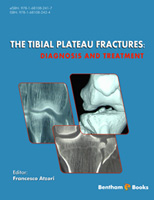Introduction
The electrical response of cells to mechanical stimulus is known as mechanotransduction. This monograph is a summary of the mechanotransduction in musculoskeletal cells responsible for body tissue maintenance, support, cover and movement. While mechanotransduction is similar among these cells, there are also several important differences in mechanical parameters and cellular pathways characteristic to each cell type. Therefore, readers will have the opportunity to update their knowledge about the increasing volume of information on mechanotransduction in these cells gained from current research.
The book features a primer on general aspects of cellular biomechanics and the experimental methods and equipment commonly used for investigating cellular mechanotransduction in vitro in two dimensional cultures in which cells are adherent to plastic surfaces. Characteristic mechanotransduction pathways in mesenchymal stem cells (MSCs), chondrocytes, osteoblasts and fibroblasts are described in the accompanying chapters. Finally, a description of clinical implementation of mechanical stimulation is presented with emphasis on distraction osteogenesis, involving osteoblast stimulation, and skin stretching techniques based on fibroblast stimulation.
This monograph is a useful reference for readers involved in graduate courses or basic research in cell biology and musculoskeletal physiology.



